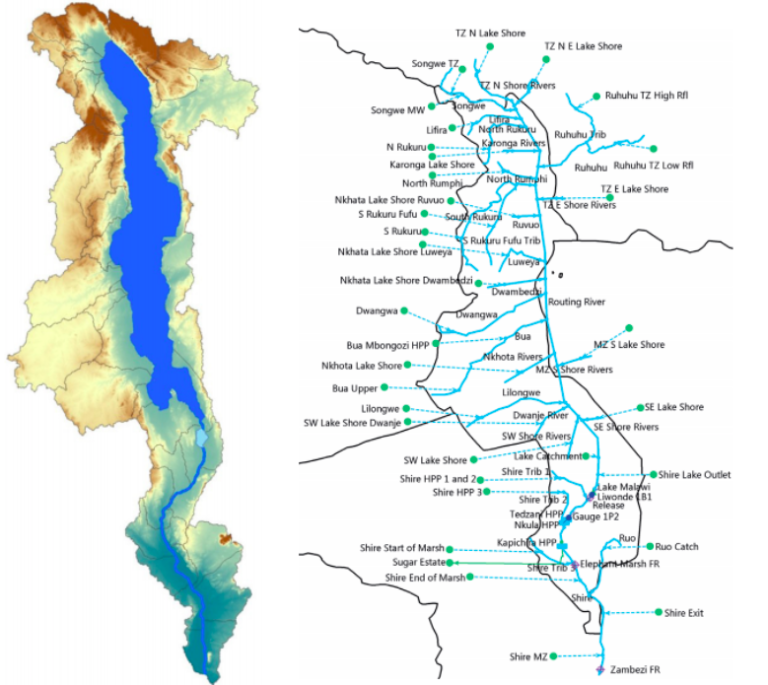Malawi is highly dependent on water from Lake Malawi and the Shire River basin (Figure 1). Over 90% of Malawi’s electricity depends on outflows from the lake into the Shire River which feed three existing hydropower plants – Tedzani, Nkula and Kapichira – with expansion anticipated at the latter two, and plans for additional hydropower stations. Most of the country’s irrigated agriculture is dependent on the river. Regular flows of water are also essential to maintain a wetland system (the Elephant Marsh) and the ecosystem services that it provides. Pressure on water resources is likely to increase as a result of a growing population, and competing demands for water for energy, agriculture, industrial and domestic purposes. Understanding the scale of potential future changes in water availability under climate change is thus essential to inform socio-economic development planning in Malawi. In this brief we use computer-based water resources models to project future water availability reflecting demand and the effects of water management strategies.
Ajay G. Bhave, Lauren Bulcock, Suraje Dessai, Declan Conway, Graham Jewitt, Andy J. Dougill, Seshagiri Rao Kolusu and David Mkwambisi


